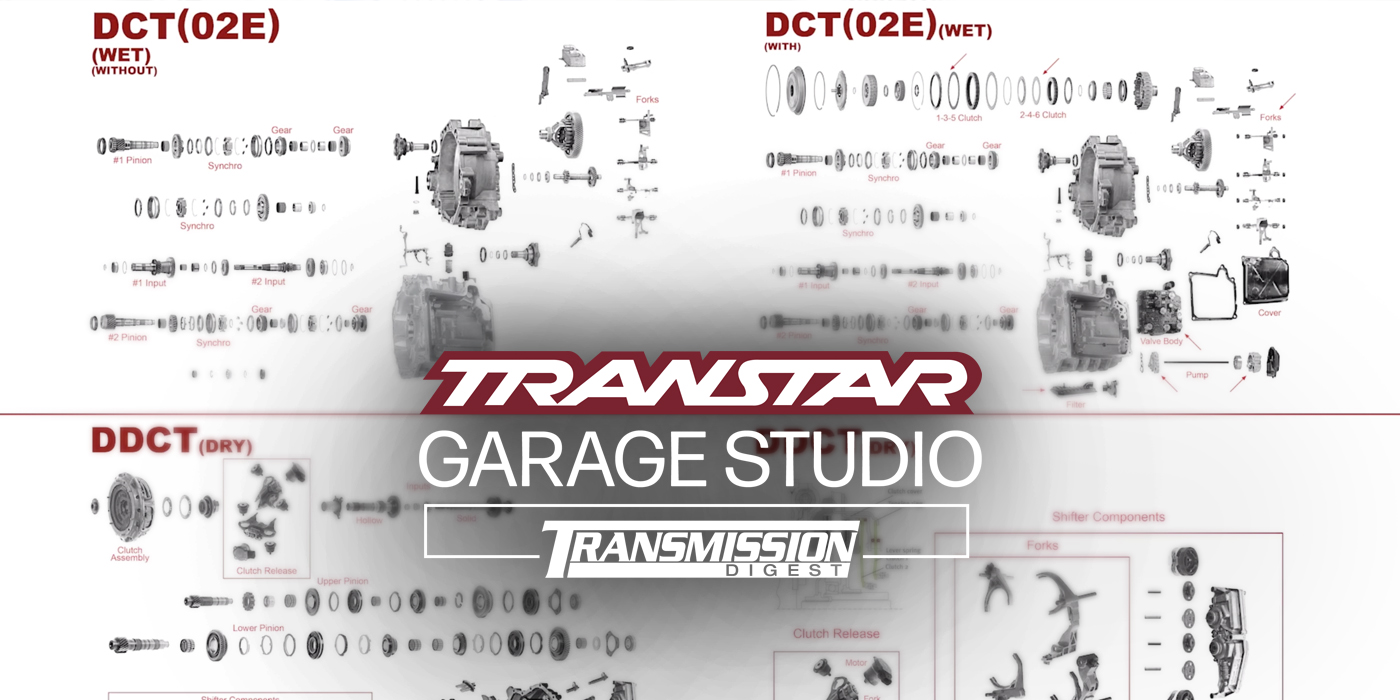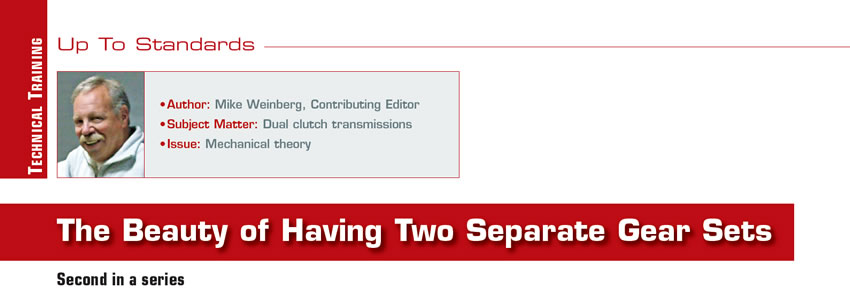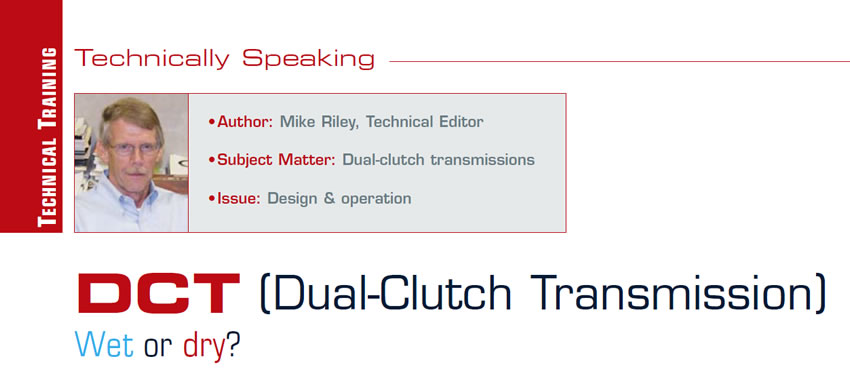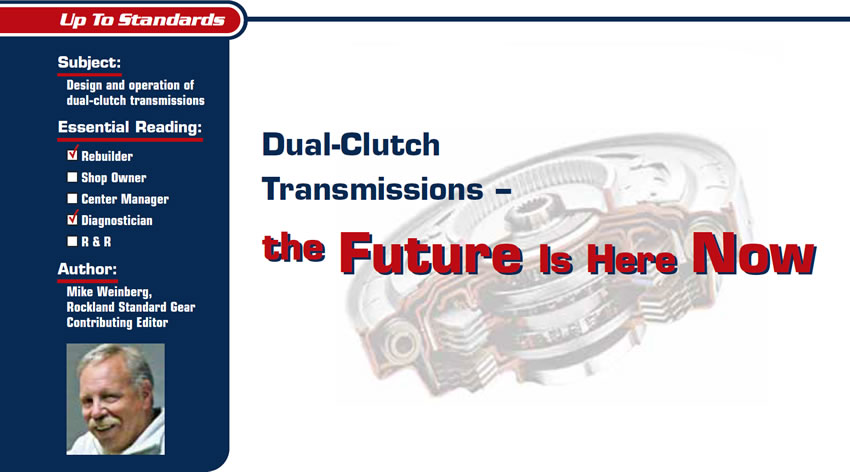Transmission Tech: Dual Clutch Operation Part 1
In this episode of Transmission Tech, Mike Riley begins a video series on DCT design, diagnostics and repair.

Electronics In Dual Clutch Units
This article is the final segment of our exploration of the dual-clutch transmission, or direct shift gear box (VW and Audi) or DualTronic in BorgWarner’s brand. We have included several schematics from a VW Touran model, as VW has the largest amount of these transmissions in use. VW using its VAS 5051 diagnostic system provides for, as they say, “guided fault finding,” which means that a test schedule is available for the unit and provides testing for sensors, actuators and the mechatronic (computerized) valve body.

Hydraulic & Fluid Controls in Dual-Clutch Units
To recap, we have looked at how the dual-clutch transmission functions, essentially two gear boxes in one with the input shafts driven by hydraulically applied clutch packs that drive three concentric shafts that are one inside the other. The innermost shaft drives a gerotor-type of fluid pump that provides pressurized fluid to actuate the dual clutches, lubricate and cool the components, and shift the transmission into the selected gear. The next two shafts are driven by the two clutch packs with one shaft shifting the even-number gears and one shifting the odd-numbered gears.

Controls Make Shifts Happen in Milliseconds
If you have been following the previous chapters of this series of articles, you are starting to understand the function of dual-clutch transmissions. We have used illustrations from the VW Direct Shift Gear Box (DSG) as VW has about 2 million of these units on the road at present.

The Beauty of Having Two Separate Gear Sets
In last month’s article, we began to study the dual-clutch transmission, looking at its potential to eventually replace the common torque converter-planetary automatic transmission. In this chapter, we will look at the mechanical theory of operations on how these gear boxes work. We will be using illustrations from VW and Audi who were the first to mass market this design in 2003, in the Audi TT and VW Golf models.

Dual-Clutch Transmission: Wet or dry?
Even though manual (standard) transmissions had evolved ever since motor vehicles were created, the greater focus of the OEMs has been toward automatics. Automatic transmissions have received more speeds, pulleys (CVT), improved converter strategy and electronics to help keep pace with an ever-changing motor vehicle. Hybrid-vehicle transmissions also tend to be automatic in nature.

Dual-Clutch Transmissions – the Future Is Here Now
The automatic transmission equipped with a torque converter has been the mainstay of conventional drivelines since World War II. A great deal of research, improved designs and advanced transmission technology have brought us excellent five-, six- and seven-speed automatics that perform extremely well. Manual transmissions are still more efficient from the fuel-economy standpoint but depend on the driver’s skill and ability to drive in a fuel-efficient manner. The EPA does not like manual transmissions because they shift at closed throttle. Automatics shift at open throttle and make control of emission levels much easier.

